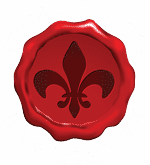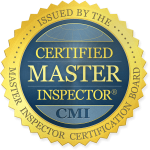This list is a great way to stay on top of your general home maintenance. Separating it into monthly, bi-annual and yearly as well as seasonal is a great way to utilize your time properly. Do outside stuff when warm and leave the inside for those cold days. A good practice of preventative home maintenance will save you time and money. You can download a PDF version of the checklist below HERE to print out and write on.
EXTERIOR
• Check for damaged gutters, hangers and downspouts.
• Remove debris in gutters and downspouts.
• Check that gutters have proper slope towards the downspouts. This should be 1/2in for every 10ft.
• Tighten any loose screws or hangers.
• Make any repairs to any holes or cracks and paint any exposed metal (use extreme caution when walking on roofs).
• Check for any damaged shingles or tiles and replace as needed.
• Check for any blisters or open seams on flat roofs.
• Check roof flashing for damage.
• Trim back any tree branches that make contact with the roof to avoid premature wear to the roof.
• Check for any leaks at all roof penetrations, like skylights, roof vents and chimneys.
• Check for rot or loose boards and replace as needed.
• Caulk any cracks to avoid water getting behind the fascia and causing rot.
• Scrape and repaint any peeling paint.
• Check that the grade slopes away from the house. This insures that water is not creating any foundation problems. Rule of thumb is 1-inch of drop per foot for the first 6 feet. The use of downspout extensions will help keep water away.
• Mason walls - Check for deteriorated brick and missing mortar
• Stucco walls - check for excessive cracks or separation. Anything over 1/16 inch should be monitored. They are many ways to fix cracks depending on size.
• Wood walls - check for rott (created by water damage or contact with earth), loose or damaged wood.
• Look for insect or pest damage like termites, birds, mice and squirrels.
• Keep all plants, trees and shrubs a minimal of 6 inches from the wall surface to prevent premature wear or moisture damage.
• Check that door, windows and trim are fitted properly and that there isn't any excessive rubbing or excessive gaps.
• Replace any broken glass.
• Check for any cloudiness in between panes of glass (the low-e gasses have escaped and the window is not performing as needed).
• Repair any missing window glaze.
• Repair screens or window and doors to keep the insects and water out.
• Check all weather stripping in window and doors.
• Check all door hardware for loose or missing parts. Also lubrication can be added to eliminate squeaky doors.
• Check all safety devices and sensors on garage doors.
• Remove all trash from window wells.
• Clean and lubricate sliding glass doors.
• Check for rot or insect damage.
• Check for any pulling fasteners, nails or screws.
• Repaint or stain any exposed wood.
• Check that all stairs and railing is secured properly.
INTERIOR
• Look for any evidence of deterioration inside and out on foundation walls. Some small cracks are normal (signs of settling), but watch for excessive moisture or efflorescence cracks. Caulk and repaint then monitor them to see if they continue to open.
• Check the operation of doors and window.
• Check the reveal on doors.
• Repair any missing grout.
• Look for water damage to hardwood floor, especially around dishwashers, refrigerators and washing machines.
• Look for water damage to roof sheathing.
• Check for rot, mold or fungus. This may indicate poor ventilation.
• Clean ceiling fans to keep them in balance and running smooth.
ELECTRICAL
• Check for rust or water marks in service panel.
• Check that breakers and fuses are marked properly to the rooms they operate.
• Hand tighten fuses and ensure that you have extras.
• Trip breakers to verify they are not seized.
• Test GFIs and note location of the GFI if they are wired in a series.
• Check cords too see if they are cut, split or frayed and replace as needed.
• Check that all plugs fit tight and are not loose.
• Check that all exterior outlets are GFI protected, weather tight and covered.
PLUMBING
• Check and repair any leak on drains, faucets, outside water bibs, water lines for refrigerator and washing machines.
• Check all water connections for a snug fit. Don't over tighten them as this can result in a broken pipe.
• Insulate pipes in unheated areas like crawlspaces.
• Get in the habit of removing the water hose after each use. Frozen pipes lead to leaking pipes.
• Check all drains for clogs. A sure sign is slow water when the drain is open. Bathroom sinks and showers are prone to clogs.
• Check that toilets are not running continuously. This will drastically reduce your water consumption and water bill.
• Check the caulking around toilets, sinks and tubs.
• Check lawn sprinklers for leaking valves and busted heads every spring.
• Drain water heaters once a year to remove any sediment that will collect at the bottom. Make sure to unplug or turn the gas off before draining and to turn them back on after the tank is full.
HEATING and COOLING
• Clean (reusable filters) or replace air filters every month (with cheaper filters) and every 3 months with better filters.
• Clean dirt and dust from around the furnace and inside the registers 2-3 times a year. More often if you experience excessive dust or dirt.
• Listen for any abnormal sounds, like squeaking or knocking and report them to a professional.
• Clean outside compressor cabinet periodically during the cooling months to insure effective airflow.
• Check that the humidifier damper is open in the winter and closed in the summer.
• Replace humidifier pad annually.
• Shut off water supply to humidifier during the cooling months.
• If at anytime you smell natural gas immediately leave and contact the gas company.
• Carefully check that the flame is even and blueish in color. Call a professional if it is a yellowish color.
• We recommend that you have your chimney cleaned and serviced once a year before using.
APPLIANCES
• Clean refrigerator coils.
• Clean and sharpen garbage disposal by putting ice and salt in disposal and running it. A great disinfectant is to put orange or lemon peels in the disposal while its running.
• Thoroughly clean the dishwasher.
• Clean dryer vent.
SAFETY EQUIPMENT
• Test smoke and carbon monoxide detectors.
• Check and service fire extinguisher often. Don’t wish you had these.
• A good ole fashion spring cleaning does wonders on your home.
Here at Reliable Solutions we want to encourage you to learn and understand how your home works. There is nothing more rewarding than fixing your own home. It is also a great way to save money. With that comes some serious hazards that can be life threatening, so please take the proper precautions. Use the proper tools and safety procedures and don’t rush to get it done. If ever in doubt call a professional. Under no circumstance is RELIABLE SOLUTIONS HOME INSPECTIONS LLC, employees, members or any associate to be held liable for any property damage and/or personal injury or death that may come from performing any actions in this booklet. The homeowner(s) and their representing parties take full responsibility for their actions in the attempt to fix, repair or replace any components to their home.
Download a PDF version of this checklist HERE to print out and write on.

